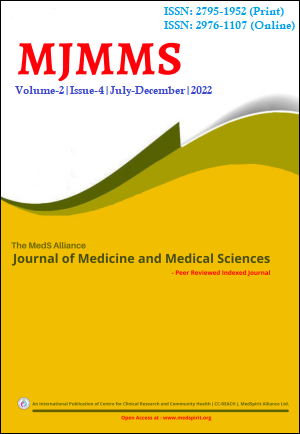Assessment of Inter-Incisal Distance among the Bachelor Level Students of a Tertiary Care Centre of Nepal
DOI:
https://doi.org/10.3126/mjmms.v2i4.53510Keywords:
Inter-incisal distance, maximum mouth opening, tongue depressorAbstract
INTRODUCTION: The inter-incisal distance at maximum mouth opening has been referred to as normal mouth opening. Variations in the inter-incisal distance exists among different age groups, sex, gender, race and ethnicity. The mean inter-incisal distance is required during the treatment of maxillofacial fractures, temporomandibular joint disorders, oral malignancies, reconstructed mouth anomalies, and craniofacial syndromes. The aim of this study was to determine the maximal inter-incisal distance among bachelor level students of tertiary care center of Nepal. MATERIALS AND METHODS: A descriptive cross-sectional study was conducted among the 320 bachelor level students of Chitwan Medical College. Convenience sampling method was used. Sex and ethnicity of the patient were recorded. Inter-incisal distance was measured in all the participants with the help of tongue depressor. The data were entered in Microsoft Excel 2019 and later transported to Statistical Package for Social Science (SPSS) version 16 for the statistical analysis. Descriptive statistical analysis was done. RESULTS: In this study among the 320 participants 131 (40.9 %) were male and 189 (59.1 %) were female. The mean age was 22.34 ± 2.02 years. The mean inter-incisal distance of male and female was 48.69 ± 6.92 mm and 46.51 ± 6.24 mm respectively. The mean inter-incisal distance was maximum in Muslims who had inter-incisal length ie.51.24± 3.54 mm, followed by Buddhists 48.86± 5.89 mm. CONCLUSIONS: This study concluded that the mean inter-incisal distance of male was more than that of female. On the basis of religion, Muslim students had maximum inter-incisal length followed by Buddhists, Hindus and Christians. On basis of ethnicity this study documented the maximum inter incisal distance in Chhetris and minimum in Newars.
Downloads
Downloads
Published
How to Cite
Issue
Section
License
Copyright (c) 2022 Rajib Chaulagain, Sujata Baral, Shila Kandel, Alisha Agrawal, Ajeevan Gautam, Sanjeeb Chaudhary

This work is licensed under a Creative Commons Attribution-NonCommercial 4.0 International License.




